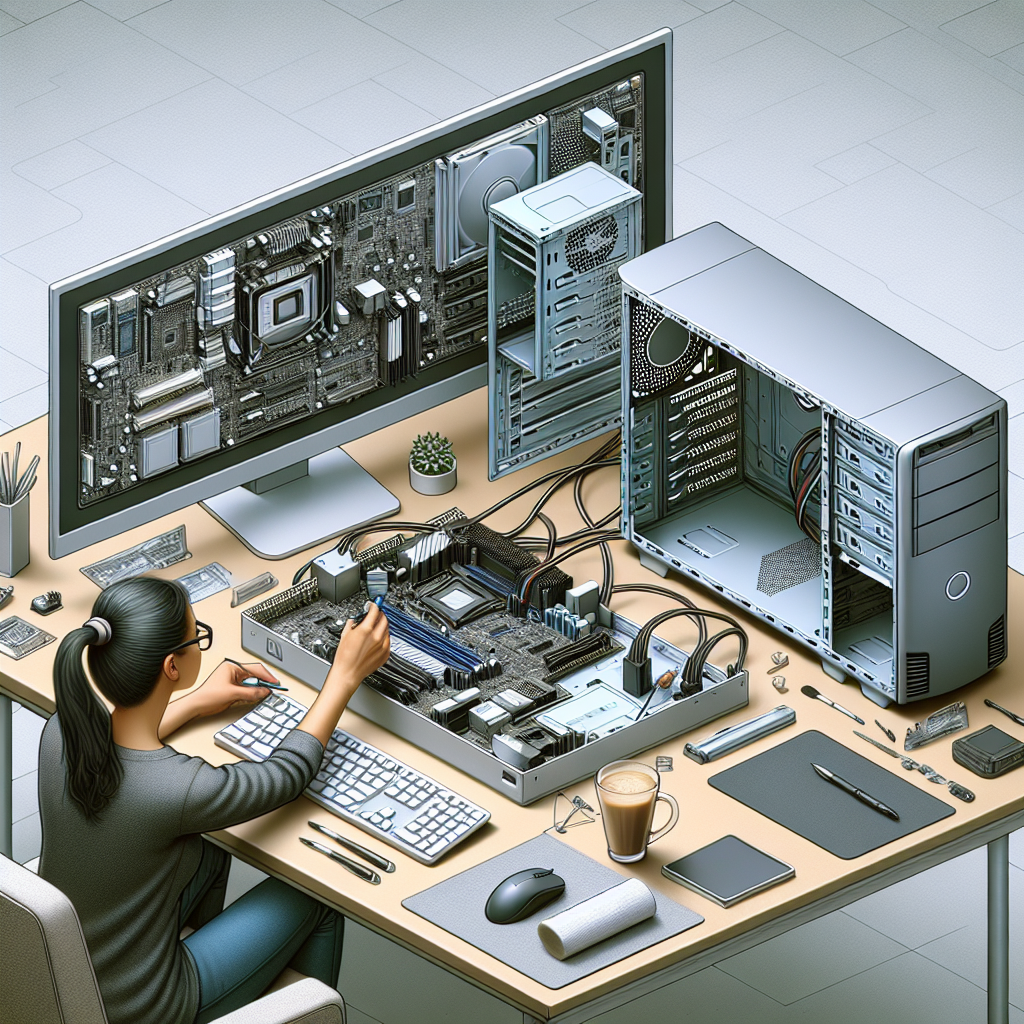Introduction
Setting up a new computer can seem daunting, especially if you are not tech-savvy. Fear not! This guide will walk you through each step to ensure you get your computer up and running with ease. From hardware setup to software installation, we’ve got you covered.
Unboxing Your Computer
Before you start, make sure you have all the components. You should find at least the following:
- Computer Tower (CPU)
- Monitor
- Keyboard
- Mouse
- Power Cables
- Instruction Manual
Checklist of Components
| Component | Purpose |
|---|---|
| Computer Tower (CPU) | Houses the main components of the computer |
| Monitor | Displays the computer’s output |
| Keyboard | Used for inputting data |
| Mouse | Helps navigate and interact with the computer interface |
| Power Cables | Provide power to the computer and monitor |
| Instruction Manual | Provides setup guidance |
Step-by-Step Setup Process
Positioning Your Hardware
1. Place the computer tower on a flat, stable surface close to a power outlet and well-ventilated area.
2. Position the monitor on your desk, ensuring it is at eye level to reduce strain.
3. Arrange the keyboard and mouse within easy reach.
Connecting the Components
1. Connect the monitor to the computer tower using the provided cable, typically an HDMI or VGA cable.
2. Plug the keyboard into a USB port on the computer tower.
3. Connect the mouse to another available USB port.
4. Attach the power cables to the computer tower and monitor, and then plug them into a power outlet.
5. Turn on the monitor and then press the power button on the computer tower.
Initial Boot and Setup
1. Upon turning on the computer, it will begin the initial boot process.
2. Follow the on-screen instructions to select your language, region, and time zone.
3. Set up your user account by providing a username and creating a strong password.
4. Connect to your Wi-Fi network or use an Ethernet cable for a wired connection.
Installing Essential Software
After setting up the hardware, you need to install essential software to make your computer functional.
Operating System
If your computer doesn’t come with a pre-installed operating system, you will need to install one. Popular options include Windows, macOS, and Linux.
Drivers and Updates
Make sure your computer’s hardware components are working efficiently by installing the latest drivers and updates.
1. Open your computer’s settings and check for available updates.
2. Visit the manufacturer’s website to download the latest drivers for your hardware.
Antivirus Software
Protect your computer from malware and viruses by installing reputable antivirus software.
Necessary Applications
Install essential applications such as browsers, office suites, media players, and any other software you require for your tasks.
Customization and Personalization
Now that your computer is set up and software is installed, you can customize and personalize it to suit your preferences.
Themes and Backgrounds
Change the desktop background and apply a theme to make your computer visually appealing.
Shortcuts and Layouts
Organize your desktop by creating shortcuts to frequently used applications and arrange icons for easy access.
Troubleshooting Common Issues
Even with careful setup, you might face some common issues. Here are some tips to troubleshoot:
- No Power: Check if all cables are securely plugged in and the power outlet is working.
- No Display: Ensure the monitor is connected properly and turned on, and check the graphics card connection.
- Peripheral Devices Not Working: Re-plug the devices and try different USB ports. Make sure drivers are installed correctly.
Conclusion
Setting up a computer doesn’t have to be a nerve-wracking experience. By following these straightforward steps, you can ensure your new machine is ready for use in no time. Happy computing!

